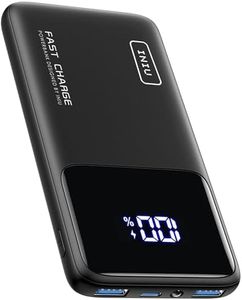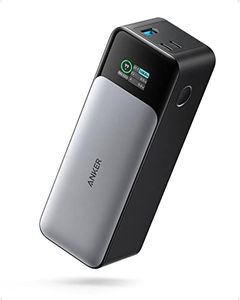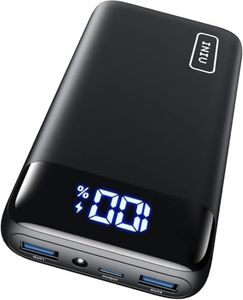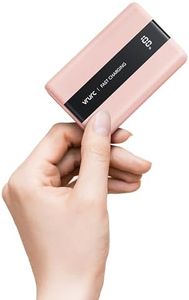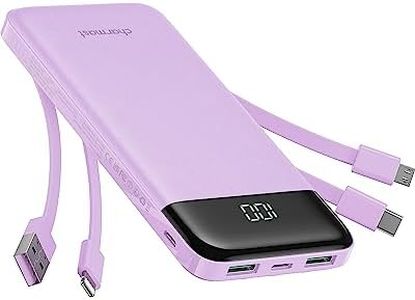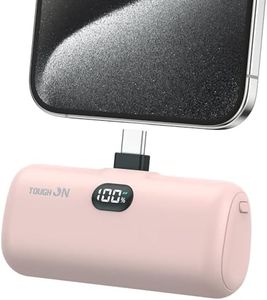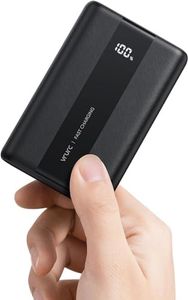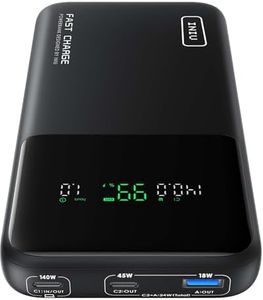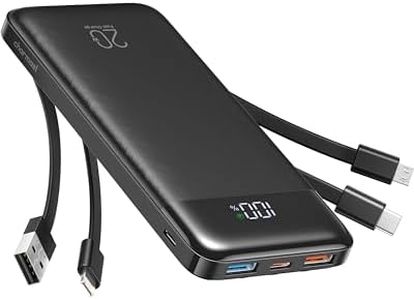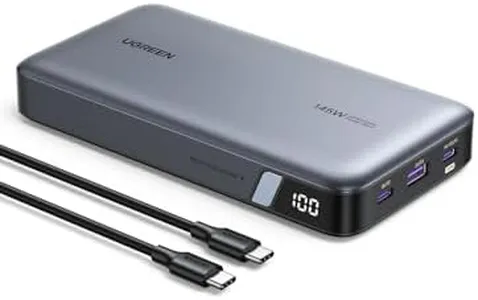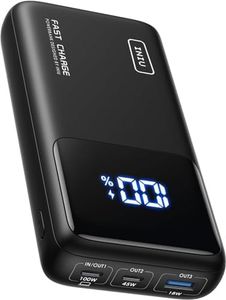We Use CookiesWe use cookies to enhance the security, performance,
functionality and for analytical and promotional activities. By continuing to browse this site you
are agreeing to our privacy policy
10 Best Portable Charger Power Banks
From leading brands and best sellers available on the web.Buying Guide for the Best Portable Charger Power Banks
Picking the right portable charger, or power bank, can make your life much easier, especially when you're traveling or spend long hours away from power outlets. The key is to find a power bank that keeps your devices charged when you need them, without being too heavy or complicated. Start by thinking about what devices you want to charge and how often you’ll need extra power. Pay attention to the specs to match the product to your needs, balancing charge capacity, physical size, and the speed at which it can power up your devices.Capacity (mAh)Capacity, measured in milliamp hours (mAh), tells you how much charge the power bank can store. This spec is important because it determines how many times you can recharge your devices before needing to recharge the power bank itself. Lower capacity models (under 5,000 mAh) are best for emergency top-ups or smaller gadgets and are usually compact. Mid-capacity power banks (5,000–15,000 mAh) will generally recharge a smartphone one to three times and are a good balance of size and power for most people. High-capacity units (over 15,000 mAh) are bulkier but can charge larger devices, like tablets, or phones multiple times. Choose a capacity based on how long you go without access to wall outlets and how many devices you need to recharge.
Output Power (Wattage or Amperage)Output power, often listed in watts (W) or amps (A), indicates how quickly the power bank can charge your devices. The higher the number, the faster the charging. Basic models may offer 1A output, which is suitable for small phones or slower charging. Mid-range options provide 2A–2.4A or 10W–12W, enabling faster charging for smartphones and small tablets. Some advanced versions offer higher outputs (up to 18W or more), supporting fast-charging technology for compatible devices. Match the output to your device’s requirements—if fast charging is important for your phone, make sure the power bank supports the same technology.
Number and Type of PortsThe number and type of ports indicate how many and what kind of devices you can charge at once. A single-port power bank is simpler and may be lighter, suitable if you only plan to recharge one device at a time. Multi-port options are useful if you need to charge your phone and another gadget, like wireless earbuds, simultaneously. Also, check for different types of ports: USB-A is common and universally compatible, while USB-C often supports faster charging and newer devices. Choose a model that fits the cables you use and the number of devices you want to charge at the same time.
Size and WeightSize and weight matter because you want your power bank to fit into your daily routine. Smaller power banks are lighter and easier to slip into your pocket or small bag but usually have less capacity. Larger models can be heavy and bulkier but last longer between charges. If you need a backup just for emergencies, a slim design is best. If you’re going on trips without easy access to electricity, a heavier, higher-capacity option may be worth the extra bulk.
Input Charging SpeedInput charging speed tells you how quickly the power bank itself recharges when plugged into a wall outlet. Slower input means longer waiting times between uses, especially for high-capacity models. Basic models may take several hours to recharge, while those with fast input, like USB-C or higher wattage adapters, can be fully charged much faster. If you often need to recharge the power bank quickly, look for models with fast input specifications.
Safety FeaturesSafety features protect both your devices and the power bank against overcharging, overheating, and short circuits. Most reputable power banks include built-in protection, but it’s important to check for mentions of these features to avoid risks when charging expensive gadgets. If you plan to use the charger frequently or on delicate devices, prioritize products that clearly state safety protections.


